How to Trim a Cat’s Nails
If a feline is part of your family, chances are your hands look scratched or your furniture and curtains are frayed. For cats, scratching and sharpening their claws is natural. However, when their nails grow too long, they are prone to break easily, which can lead to fungus and infection.
5-Minute Crafts offers you a guide to trim your cat’s nails. This process is not painful for them, but we recommend you to be patient and very careful. Before you start, it’s necessary to consult a veterinarian about their health condition and specific needs.
Before you start
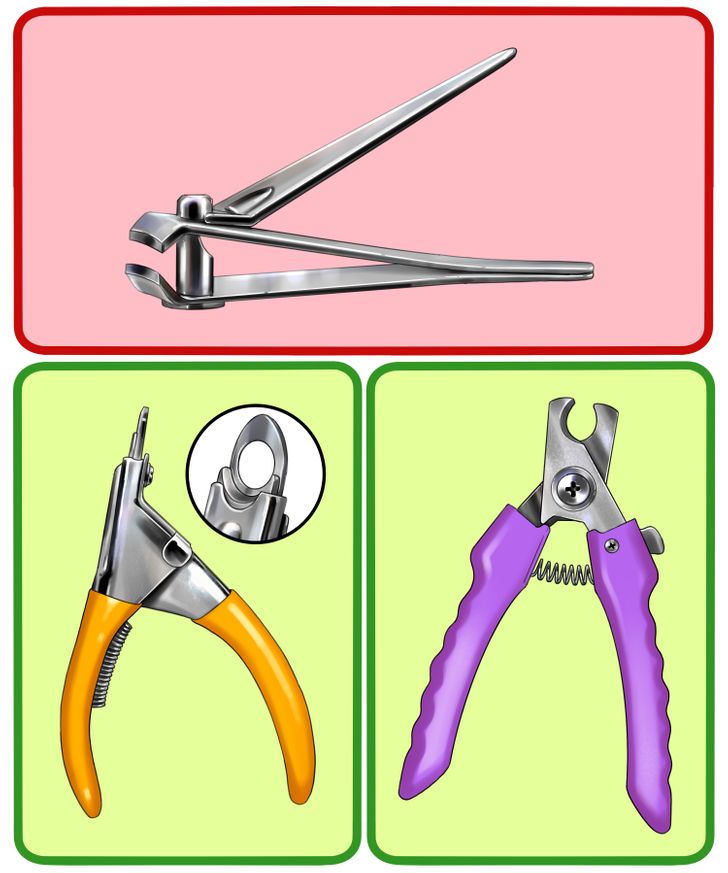
Purchase nail clippers or scissors designed for cutting a cat’s nails. This is very important, as manicure tools usually don’t have an ergonomic handle and are flat-headed, which could break the tip of your cat’s claws when pressure is applied, causing pain and injury to their paw.
1. Prepare the environment.
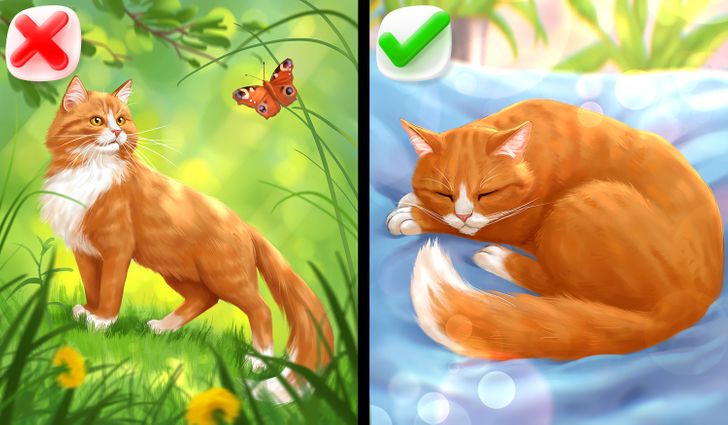
- Choose a quiet place. It’s best if it’s a quiet space where the cat feels comfortable, away from any windows, distractions or stressful situations for your pet.
- Choose to do this activity when the cat is sleepy, after a meal, or after playing with them and they feel tired.
- Try to remain calm. Cats can interpret your emotions and recognize your body language.
Ideally, train your cats from an early age so that they will accept nail trimming as part of their routine.
2. Caress and massage their paws.
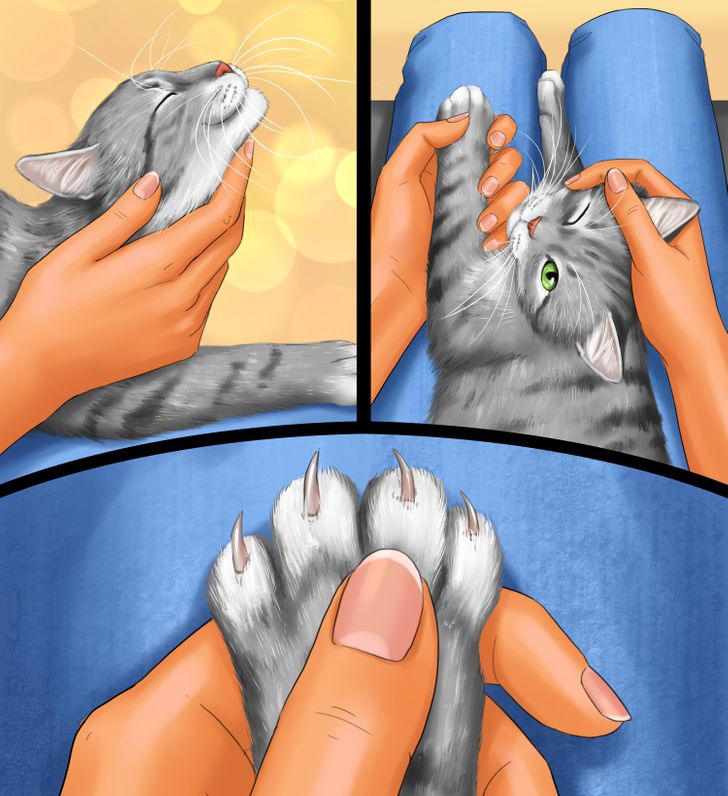
- Felines, by nature, tend to be a bit reluctant when you touch certain parts of their body. So be affectionate and gently stroke their paws and their favorite places, such as the contours of their cheeks or under their chin.
- Take their paws and massage them for a couple of seconds. Push the tip of their claws to extend their nails. Release the cat immediately and offer her or him a snack. Reward and cuddle the cat.
Your kitties may want to hide their paws or get up and walk away. Let them go. You can try again after a few minutes.
3. Allow them to become familiar with the nail clippers.
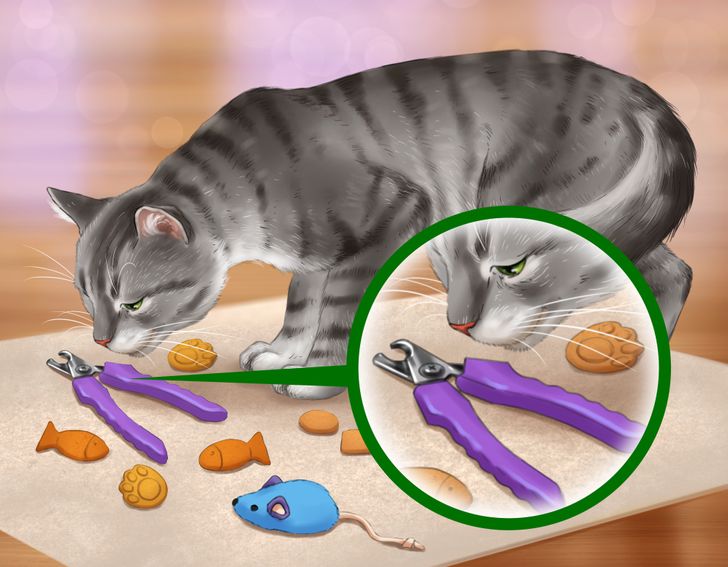
- We know that cats are very curious beings, so take advantage of this behavior and place the nail clippers close to them so they can smell them, investigate them, and become familiar with them.
- In order for them not to be afraid of this object, especially if it’s the first time you’re using them, you can place a couple of their favorite treats around the nail clippers. Your feline will positively associate this tool with food.
4. Know the anatomy of their nails.
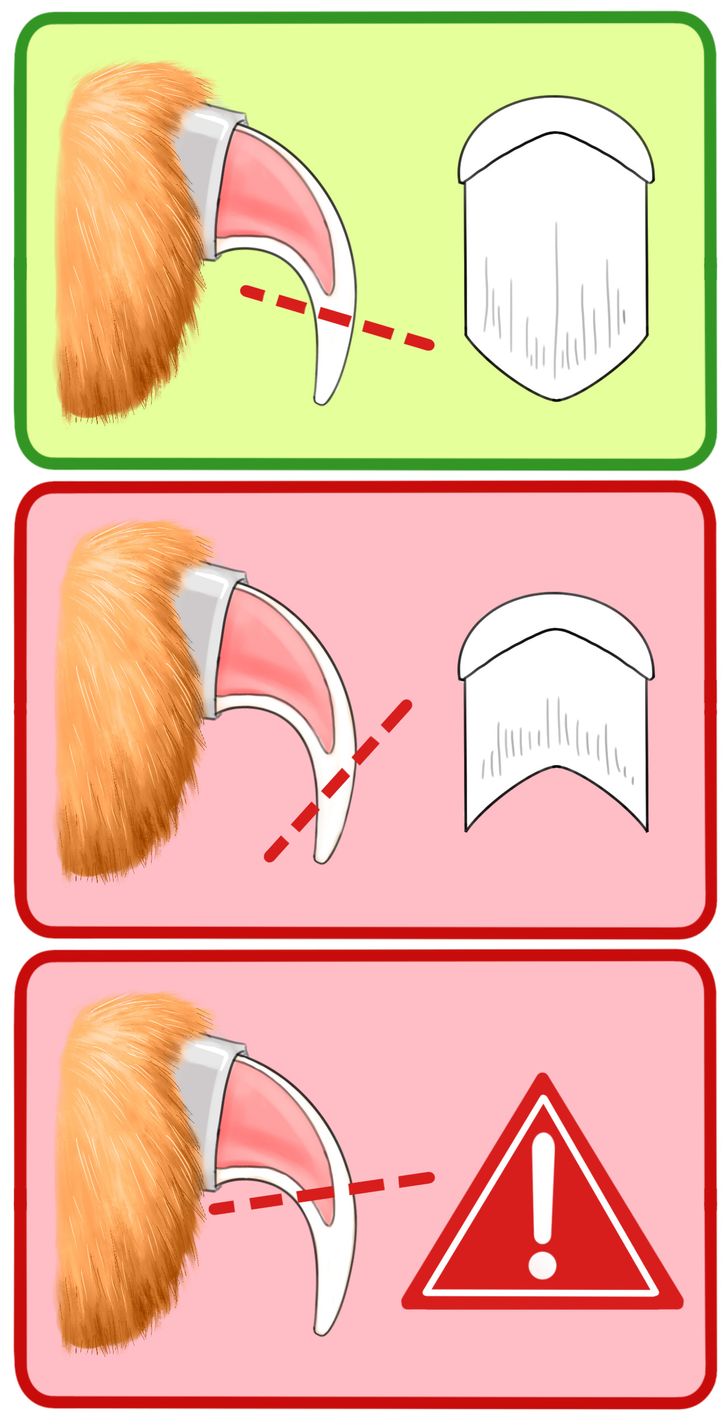
- A cat’s claws are made up of 2 visible parts: the quick, a small, pinkish triangle that forms the pulp or the base of the claw; and the nail that protects it, which can be either light-colored or black.
- When cutting, you should only cut a couple of millimeters from the transparent tip. Never cut at the margin of the hyponychium or over it, as this could cause bleeding and infections, and it can be very painful for him.
In case one or more of their nails shows any signs of bleeding, go to a veterinarian immediately.
5. Cut their nails.
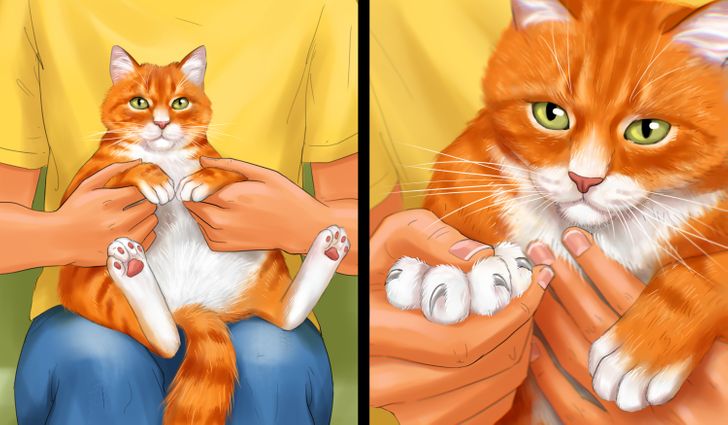
1. Place your cat on your lap with his or her back facing you. Ideally, you want the cat to feel comfortable and secure.
2. Gently squeeze the top and bottom of the paw, at the joint just behind the claw, so you can extend their nail.
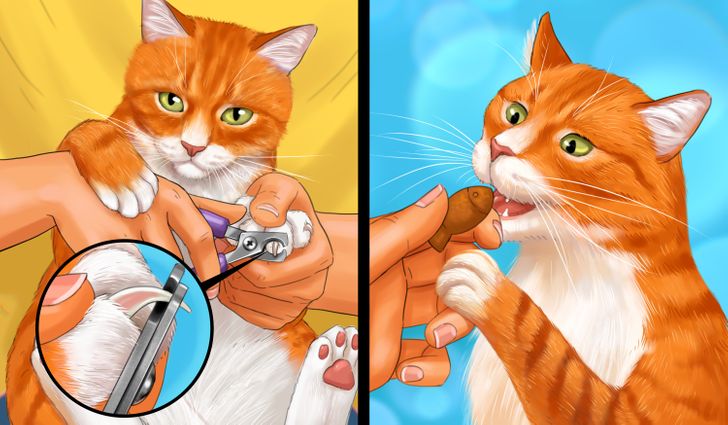
3. Hold your tool in one hand and your pet’s paw in the other. Cut only the tip of the claw, as shown in the guide image.
4. Try trimming a couple of nails and pause to reward the cat. Your cats may protest, meow, and try to scratch you, but don’t scold or rush them, you could hurt them. Be patient, let them go, and try again after 30 minutes.
Recommendations
- You may find it easier if someone else helps you. Choose someone your pet trusts and is familiar with. This way, while holding the cat in your lap, you can clip his or her claws.
- A trick that can be useful when trimming their claws and calming your cat is to cover their eyes to prevent them from seeing the process and getting unnecessarily stressed.
- It’s advisable to trim their nails every 10 days or 2 weeks.